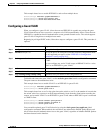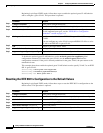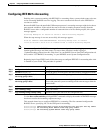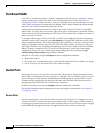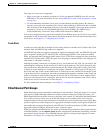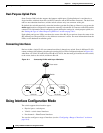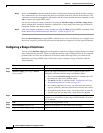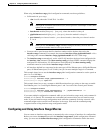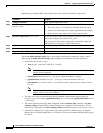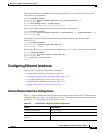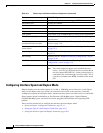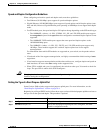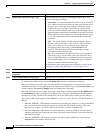
10-5
Catalyst 2960 Switch Software Configuration Guide
78-16881-01
Chapter 10 Configuring Interface Characteristics
Using Interface Configuration Mode
To configure a physical interface (port), specify the interface type, module number, and switch port number,
and enter interface configuration mode.
• Type—Fast Ethernet (fastethernet or fa) for 10/100 Mbps Ethernet, Gigabit Ethernet
(gigabitethernet or gi) for 10/100/1000 Mbps Ethernet ports, or small form-factor pluggable (SFP)
module Gigabit Ethernet interfaces.
• Module number—The module or slot number on the switch (always 0 on the Catalyst 2960 switch).
• Port number—The interface number on the switch. The port numbers always begin at 1, starting with
the far left port when facing the front of the switch, for example, fastethernet0/1 or
gigabitethernet0/1. If there is more than one interface type (for example, 10/100 ports and SFP
module ports, the port numbers restart with the second interface type: gigabitethernet0/1. For a
switch with 10/100/1000 ports and SFP module ports, SFP module ports are numbered
consecutively following the 10/100/1000 ports.
You can identify physical interfaces by physically checking the interface location on the switch. You can
also use the show privileged EXEC commands to display information about a specific interface or all
the interfaces on the switch. The remainder of this chapter primarily provides physical interface
configuration procedures.
Procedures for Configuring Interfaces
These general instructions apply to all interface configuration processes.
Step 1 Enter the configure terminal command at the privileged EXEC prompt:
Switch# configure terminal
Enter configuration commands, one per line. End with CNTL/Z.
Switch(config)#
Step 2 Enter the interface global configuration command. Identify the interface type and the number of the
connector. In this example, Gigabit Ethernet port 1 is selected:
Switch(config)# interface gigabitethernet0/1
Switch(config-if)#
Note You do not need to add a space between the interface type and interface number. For example,
in the preceding line, you can specify either gigabitethernet 0/1, gigabitethernet0/1, gi 0/1, or
gi0/1.



